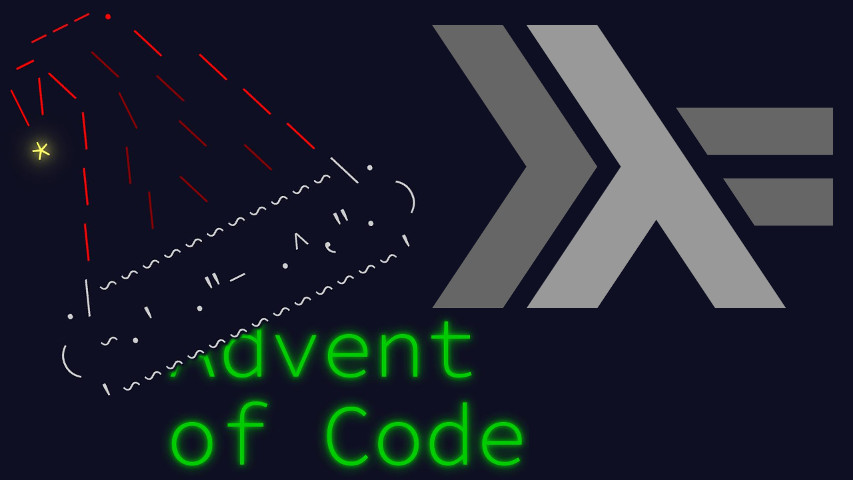Today’s AoC challenge, “Binary Diagnostic”, asks us for a few statistics on a list of binary numbers. This post is a literate Haskell program1, so let’s get a few imports out of the way.
import Control.Arrow ((&&&))
import Control.Monad (guard)
import Data.Char (digitToInt)
import Data.Function (on)
import Data.List (foldl',group,sort,transpose)
import Data.Maybe (mapMaybe)We’ll be dealing with a number’s binary representation a lot. Let’s define a type for that from the start.
type BinNum = [Bool]The puzzle input is a list of such numbers represented in ASCII. The decoding function is simple and straightforward.
decode :: String -> [BinNum]
decode = (map . map) (toEnum . digitToInt) . linesThe gamma rate is the most common number bit, sequenced per position. So let’s determine what the most common bit is within a group.
mostCommon :: [Bool] -> Bool
mostCommon = decide . map length . group . sort . (False :) . (True :)
where decide [a,b] = a <= bThe internal function decide is one of those cases where
simplifying boolean expressions can go too far. The core idea is to
return the most common bit’s value given a (|False|,|True|)
pair, the population counts for both bit values. The result should be
False if a > b and
True if a < b. Which simplifies
nicely2 to just a < b.
I’m force-including two samples to ensure the resulting grouped
sorted list has False and True where I expect
them, even when absent from the original.
Now the gamma rate can be computed by applying that
mostCommon operation bit by bit.
part1 :: [BinNum] -> Int
part1 = uncurry (*~) . (id &&& map not) . map mostCommon . transposeThis uses a simple helper to multiply two numbers after converting them from binary representation.
(*~) :: BinNum -> BinNum -> Int
(*~) = (*) `on` foldl' (\a b -> 2*a + fromEnum b) 0So far, so good.
For part 2, instead of picking a bit by index, we’ll filter. We really need to trawl through the entire set to actually determine the partition criterion, so point-free style doesn’t seem so appealing right now. Instead we’ll alternate filtering and selecting until we narrowed it down to a single number.
select :: (Bool -> Bool) -> [BinNum] -> BinNum
select f = go [] where
go acc [bs] = reverse acc ++ bs
go acc bss = go (b : acc) $ mapMaybe g bss
where b = f (mostCommon (map head bss))
g (h:t) = t <$ guard (h == b)What’s that f argument? It’s a hook to allow inverting
the answer when switching bewteen oxygen generator and CO2
scrubber. We can then apply both bit criteria and merge to a puzzle
answer.
part2 :: [BinNum] -> Int
part2 = uncurry (*~) . (select id &&& select not)A main wrapper to solve it all:
main :: IO ()
main = interact $ show . (part1 &&& part2) . decodeThis concludes today’s solution. See you tomorrow!



